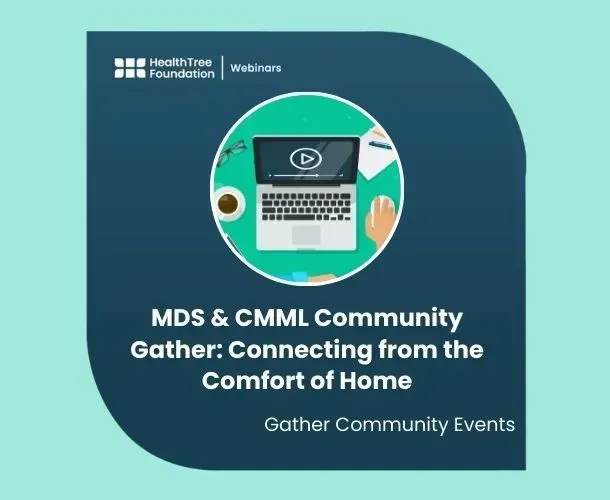Gemtuzumab Ozogamicin for Relapsed/Refractory AML

Relapsed and refractory acute myeloid leukemia (AML) is a devastating diagnosis with a very low five-year survival rate. Fortunately, researchers are constantly exploring new and improved treatment options. This article explores the potential of gemtuzumab ozogamicin (GO) for patients with relapsed/refractory AML.
What is Gemtuzumab Ozogamicin (GO)?
Gemtuzumab Ozogamicin (Mylotarg, Pfizer) is an anti-CD33 antibody-drug conjugate. This means it targets a protein called CD33, found on the surface of many AML cells. The antibody delivers a chemotherapy drug directly to the cancer cells, potentially increasing its effectiveness while minimizing side effects on healthy tissues.
A large majority of AML diagnoses express the CD33 antigen. Gemtuzumab ozogamicin is an anti-CD33 monoclonal antibody. It is “FDA approved for patients with AML who cannot tolerate intensive chemotherapy, and additionally received FDA approval in the RR-AML setting on the basis of a modest complete response (CR) rate of 26%.”
Gemtuzumab ozogamicin is optimal for newly diagnosed CD33-positive acute myeloid leukemia (AML) in adults and pediatric patients 1 month and older and adults and children who are 2 years old or older, and who have CD33-positive AML that is relapsed or refractory.
The following are all clinical trials using gemtuzumab ozogamicin:
Several clinical trials are investigating the effectiveness and safety of GO combined with other treatments for relapsed/refractory AML. Here are some ongoing and completed trials:
GO in combination with liposomal cytarabine and daunorubicin
- 18 pediatric patients with relapsed/refractory AML - Phase I trial recruiting
- 50 patients with relapsed/refractory AML or high-risk MDS - Phase II trial recruiting
GO with fludarabine/cytarabine with or without venetoclax
- This is a trial for children, adolescents, and young adults with 2nd relapsed AML or 1st relapsed AML unable to receive additional anthracycline.
- Phase III trial recruiting 98 participants
GO and midostaurin with standard chemotherapy
- This is a dose-finding study to identify the maximum tolerated dose (MTD) schedule of GO and its safety and tolerability in combination with midostaurin in FLT3-mutated newly diagnosed AML patients.
- Phase I recruiting 18 patients
GO combined with chemotherapy in newly diagnosed AML
- This Phase II evaluates the safety of a regimen incorporating fludarabine phosphate (fludarabine), high-dose cytarabine, filgrastim-sndz, idarubicin hydrochloride (idarubicin), and GO in patients with untreated inv(16) or t(8;21) AML.
- Recruiting 270 patients
To continue exploring open clinical trials for AML patients, use the Healthtree's Clinical Trial Finder HERE
CREATE A FREE HEALTHTREE ACCOUNT
Relapsed and refractory acute myeloid leukemia (AML) is a devastating diagnosis with a very low five-year survival rate. Fortunately, researchers are constantly exploring new and improved treatment options. This article explores the potential of gemtuzumab ozogamicin (GO) for patients with relapsed/refractory AML.
What is Gemtuzumab Ozogamicin (GO)?
Gemtuzumab Ozogamicin (Mylotarg, Pfizer) is an anti-CD33 antibody-drug conjugate. This means it targets a protein called CD33, found on the surface of many AML cells. The antibody delivers a chemotherapy drug directly to the cancer cells, potentially increasing its effectiveness while minimizing side effects on healthy tissues.
A large majority of AML diagnoses express the CD33 antigen. Gemtuzumab ozogamicin is an anti-CD33 monoclonal antibody. It is “FDA approved for patients with AML who cannot tolerate intensive chemotherapy, and additionally received FDA approval in the RR-AML setting on the basis of a modest complete response (CR) rate of 26%.”
Gemtuzumab ozogamicin is optimal for newly diagnosed CD33-positive acute myeloid leukemia (AML) in adults and pediatric patients 1 month and older and adults and children who are 2 years old or older, and who have CD33-positive AML that is relapsed or refractory.
The following are all clinical trials using gemtuzumab ozogamicin:
Several clinical trials are investigating the effectiveness and safety of GO combined with other treatments for relapsed/refractory AML. Here are some ongoing and completed trials:
GO in combination with liposomal cytarabine and daunorubicin
- 18 pediatric patients with relapsed/refractory AML - Phase I trial recruiting
- 50 patients with relapsed/refractory AML or high-risk MDS - Phase II trial recruiting
GO with fludarabine/cytarabine with or without venetoclax
- This is a trial for children, adolescents, and young adults with 2nd relapsed AML or 1st relapsed AML unable to receive additional anthracycline.
- Phase III trial recruiting 98 participants
GO and midostaurin with standard chemotherapy
- This is a dose-finding study to identify the maximum tolerated dose (MTD) schedule of GO and its safety and tolerability in combination with midostaurin in FLT3-mutated newly diagnosed AML patients.
- Phase I recruiting 18 patients
GO combined with chemotherapy in newly diagnosed AML
- This Phase II evaluates the safety of a regimen incorporating fludarabine phosphate (fludarabine), high-dose cytarabine, filgrastim-sndz, idarubicin hydrochloride (idarubicin), and GO in patients with untreated inv(16) or t(8;21) AML.
- Recruiting 270 patients
To continue exploring open clinical trials for AML patients, use the Healthtree's Clinical Trial Finder HERE
CREATE A FREE HEALTHTREE ACCOUNT

about the author
Lisa Foster
Lisa Foster is a mom of 3 daughters and 1 perfect grandchild, a puzzle lover, writer and HealthTree advocate. She believes in the mission of the foundation and the team that builds it forward. She calls Houston, Texas home.
More on Clinical Trials
Trending Articles

Get the Latest Acute Myeloid Leukemia Updates, Delivered to You.
By subscribing to the HealthTree newsletter, you'll receive the latest research, treatment updates, and expert insights to help you navigate your health.
Together we care.
Together we cure.
3x Faster.












